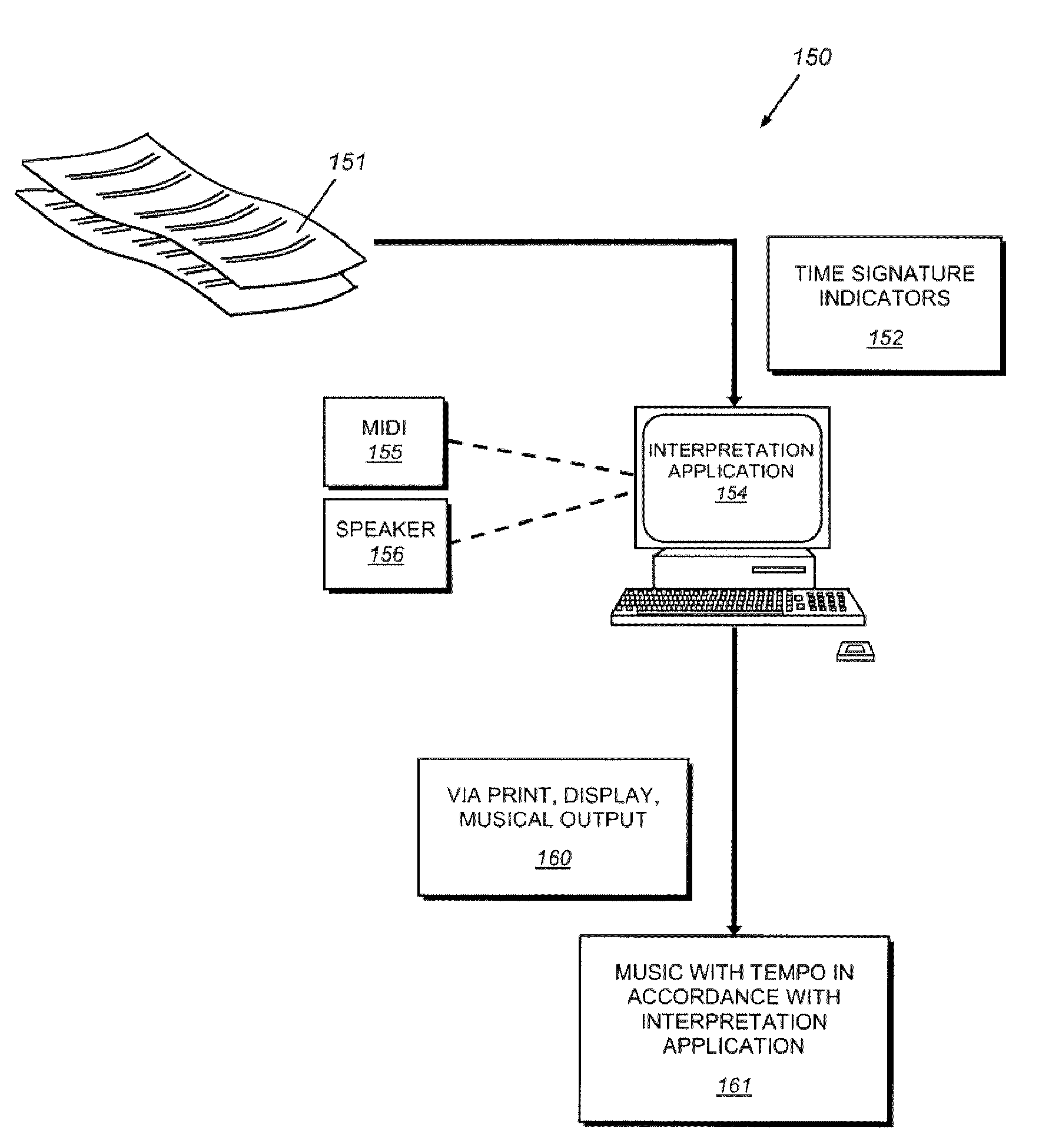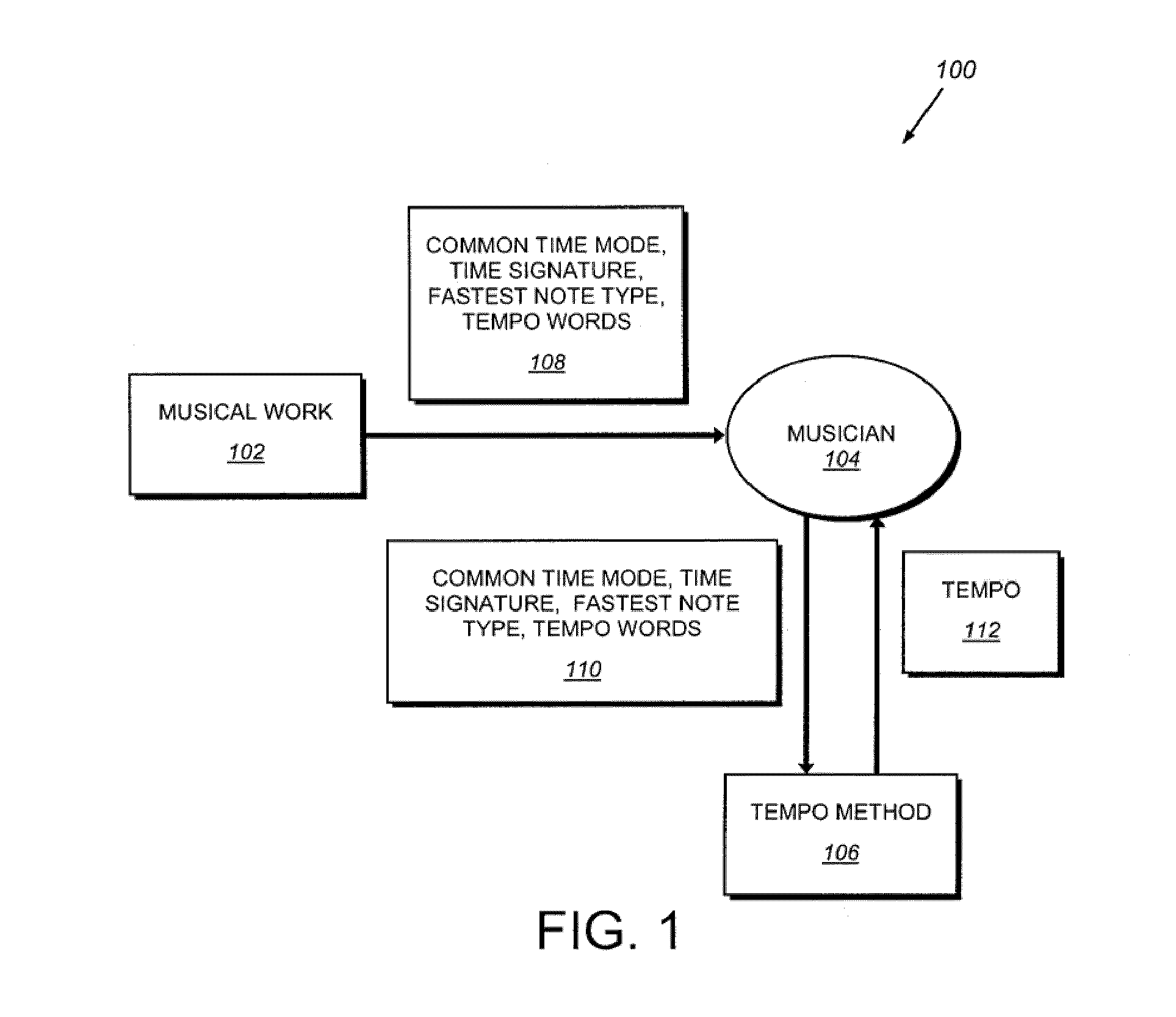System and method for determining tempo in early music and for playing instruments in accordance with the same
a technology of tempo and early music, applied in the field of systems and methods for determining the tempo in early music, can solve the problems of complex systems for determining the appropriate tempo, many debates and discussions, and systems in existence that do not teach a system that is applicable to all
- Summary
- Abstract
- Description
- Claims
- Application Information
AI Technical Summary
Benefits of technology
Problems solved by technology
Method used
Image
Examples
Embodiment Construction
[0023]Illustrated in FIG. 1 is a block diagram showing an overview for a tempo determination system 100 according to an illustrative embodiment of this invention. Depicted in FIG. 1 is the relative interaction between a piece of music 102, a musician 104 and the tempo method 106 according to the tempo determination system. According to the system 100, the system as used herein may be applicable to a variety of early Baroque era musical works composed prior to the advent of the metronome and particularly to the musical works of Bach. The applicability of the illustrative system and method to a particular work can be determined by 1) confirming that the work is scored generally in conformance with the rules and principles described herein and 2) playing the piece after applying the rules to determine if a pleasing and musically logical sound is achieved.
[0024]In the illustrative system and method 100, there are several factors that determine the tempo of a piece of music. These are th...
PUM
 Login to View More
Login to View More Abstract
Description
Claims
Application Information
 Login to View More
Login to View More - R&D
- Intellectual Property
- Life Sciences
- Materials
- Tech Scout
- Unparalleled Data Quality
- Higher Quality Content
- 60% Fewer Hallucinations
Browse by: Latest US Patents, China's latest patents, Technical Efficacy Thesaurus, Application Domain, Technology Topic, Popular Technical Reports.
© 2025 PatSnap. All rights reserved.Legal|Privacy policy|Modern Slavery Act Transparency Statement|Sitemap|About US| Contact US: help@patsnap.com



